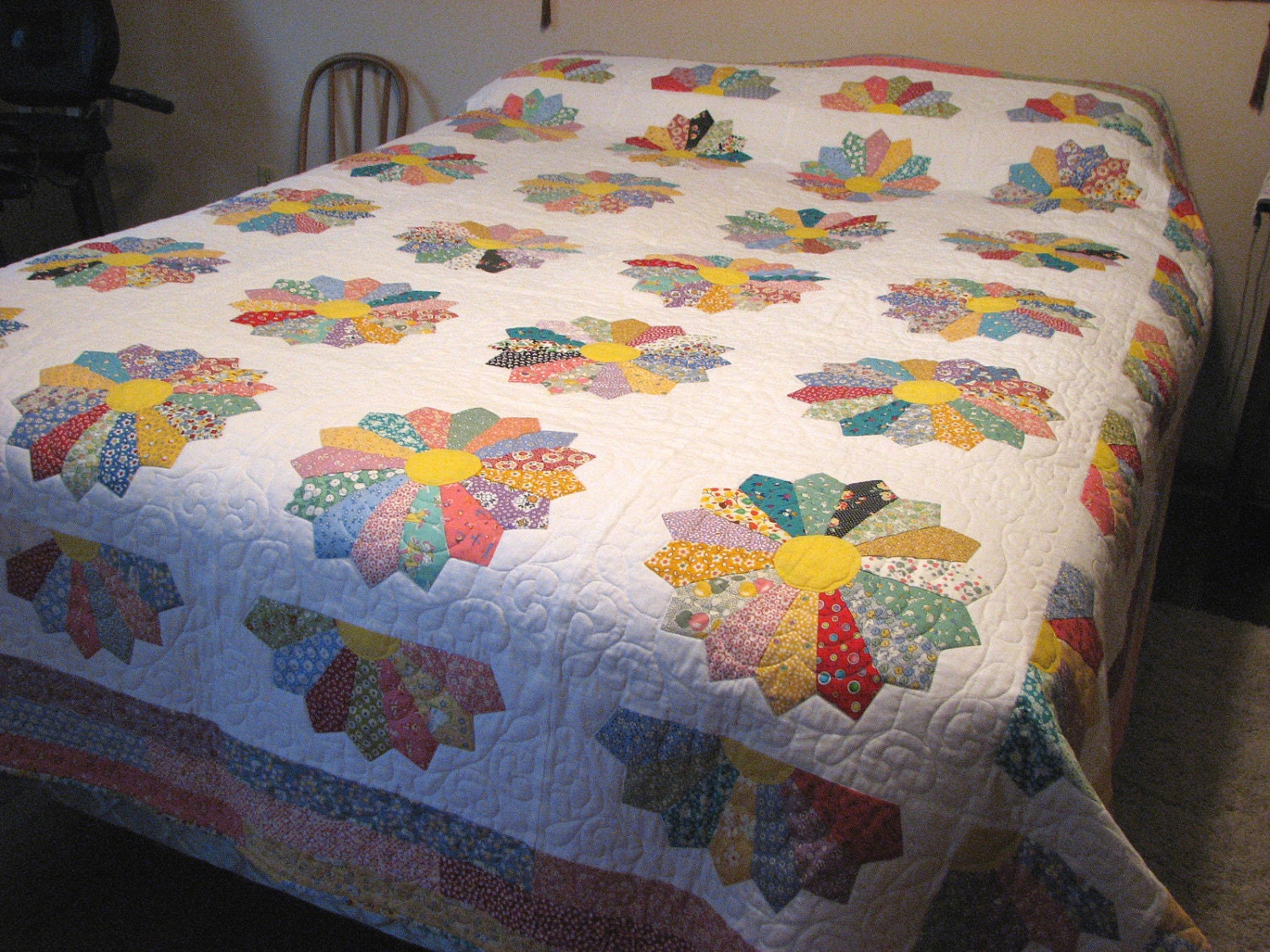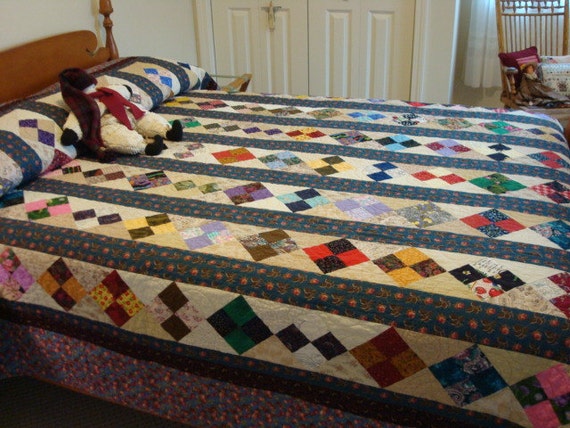Quilting Dresden plate is like going around in circles, counting steps. I will try to elaborate for those who love Dresden quilts. First, I will show you a traditional Dresden, then others using the same three-hundred sixty degrees in a circle, divided down to know what template is best for purchase. I may have shown some of these earlier, but will try and show a template that will get you there to doing these things some of you luckier may have seen a quilter in the family do. Not everyone loves circles. When a person can't master her 1/4 inch seam allowance, and in some cases on the diagonal, 3/8 of an inch (no, I am not Pathagoreas nor know why the diagonal takes up 3/8", but a person who has used a slide rule might know. Unfortunately only people who loved math with all their heart, soul and mind, who are probably in the engineering or math teacher professions and some architects, could tell you without looking it up in old, dusty texts. And someone responsible for building a round-topped building might know. That's just my opinion. But a master quilter who has made ten or more Mariner's compass quilts has an inkling. Often this appeals to a woman engineer who grew fascinated with the design and construction of quilts and loved circles and its multitudinous dimensions might get it better than anyone. They need to be leary of quilting. It's a positive disease, but disease is what it is, and a quilt can make one focus on the oddest parts of mathematics you ever heard of. Plane geometry, trigonometry, and even calculus might provide inspiration for a quilt. Don't ask me why, but I recalled the Pythagorean theorem 20 years after I learned it from a patient schoolteacher named Mrs. Jones from Aldine High School before 1964. Going into her classroom was a delightful trip into the reality of mathematics and its applications to science. There I go again, on a trip down memory lane.

This quilt is based on the quilter's old favorite, Dresden Quilt. It doesn't look like a Dresden, not exactly, but the circular measurements, the strips, etc., land it into what the quilter knows is a Dresden Plate style quilt. I love the modern feel, the rule-breaking, and the sheer fun of this new way of stitching an old favorite:
The quilter fashioned these circles into octagonal shapes, using 12 colored strips with black at either edge
and 12 white (background strips placed between them. Mrs. Jones said good mathematicians were generally
considered "lazy" persons figuring the easiest method possible, and this clever designer found that it's easier
to sew a single layer underneath an open (or pressed one way) seam allowance, with the seam allowance showing
underneath the carefully guided open seam on top where you could see it being stitched open or pressed to a "correct" side.
When one divides the 360 degrees of a circle by 12 + 12 = 24 or 360/24 = 15 degrees, you need to purchase a 15-degree
wedge ruler to accommodate where to cut the white wedges as well as the colored + black inner or outer match heads,
you need to alternate the matchheads, large and small by rotating your wedge acrylic ruler up and down to get oh, say the
aqua-turquoise wheels of matchsticks with heads to the center and heads to the outer rings on the two types of
circles the above show. You could also cut the same number of spokes of each type and make 2 different quilts,
one with matchneads on the outside which emphasizes the wheel appearance, or a quilt with the
matchneads on the inside with the appearance on its outer edge as an octagon with 8 sides and 4 corner wedges we
quilters call half-square triangles. With no knowledge of this quilt's size, I would have to sit myself down, get a protractor and a
circle calibrated with 360 degrees, decide what size of a bed this quilt would fit, how much lap I would want at the top, bottom,
and sides to tuck under or not to tuck under, to figure the amount of fabric that would be needed to make the above quilt.
/end lecture about not much of anything.












